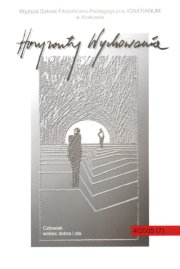Pozorne dobro, ukryte zło: edukacja komercyjna w mediach
Abstrakt
Among the four models of communication described by D. McQuail (transmission model; ritual or expressive model; publicity model; reception model), the publicity model reveals specialimportanceforthemassmedia,sinceit depicts communication through the media as gaining audience, treated as the goal of advertising and consumers. The dangers resulting from the commercial usage of the audience are noticed, among others, in the Catholic Church documents, as well as by researchersexaminingtheconsumersociety.Theauthordoesnot negate the importance of advertising in contemporary world. However, he suggests a critical examination of the functions performed by the media. Apart from information, correlation, continuation, entertainment and mobilization, the commercial function is becoming more and more significant, with the media beingmeretoolsofadvertising; the function which prepares the audience for the role of consumers.
Copyright (c) 2017 Horyzonty Wychowania

Utwór dostępny jest na licencji Creative Commons Uznanie autorstwa – Użycie niekomercyjne – Bez utworów zależnych 4.0 Międzynarodowe.
Uwagi dotyczące praw autorskich
Autorzy publikujący w tym czasopiśmie wyrażają zgodę na następując warunki:
- Autorzy zachowują prawa autorskie, przyznając czasopismu prawo do pierwszej publikacji swojego tekstu jednocześnie zarejestrowanego pod numerem licencji CC BY-ND, która pozwala innym na korzystanie z tego tekstu z uznaniem autorstwa tekstu oraz pierwotnej publikacji w tym czasopiśmie.
- Autorzy proszeni są o nawiązywanie odrębnych, dodatkowych porozumień wynikających z umowy, dotyczących dystrybucji opublikowanej w czasopiśmie wersji tekstu nie na prawach wyłączności (np. opublikowanie go w repozytorium instytucji lub w innym czasopiśmie), z potwierdzeniem pierwszej publikacji w tym czasopiśmie.
Wyraża się zgodę i zachęca autorów do publikacji ich tekstu w Internecie (np. w repozytorium instytucji lub na jej stronie internetowej) przed lub podczas procesu składania tekstu jako, że może to prowadzić do korzystnych wymian oraz wcześniejszego i większego cytowania opublikowanego tekstu (Patrz The Effect of Open Access). Zalecamy wykorzystanie dowolnego portalu stowarzyszeń badawczych z niżej wymienionych:





